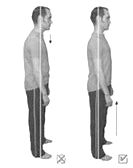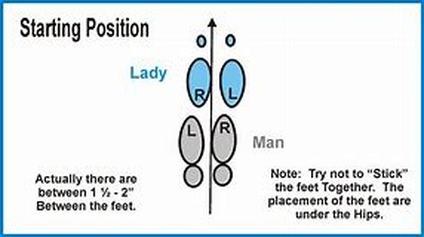INTRODUCTION
Learning anything new can be daunting including learning to ballroom dance. As you walk into the dance class there will likely be a mixture of nerves, uncertainty and excitement. Something to remember is that we all learn in different ways and at different speeds.
Learning anything new can be daunting including learning to ballroom dance. As you walk into the dance class there will likely be a mixture of nerves, uncertainty and excitement. Something to remember is that we all learn in different ways and at different speeds.

Most people do not realise that when walking the first part of your body that moves is your head! Beginner dancing is sometimes likened to "walking to music". Make sure your first steps are not just moving your feet - move your body as well so that your head is over the foot you have moved to keep your weight on the last foot used - in this way you will know which foot to use next.
The protocol in ballroom dancing is to name patterns after the Lead steps. In most ballroom dances the Lead will start with the left foot and the Follower with their right foot.
The protocol in ballroom dancing is to name patterns after the Lead steps. In most ballroom dances the Lead will start with the left foot and the Follower with their right foot.

Start the dance with the feet slightly apart with the Lead weight on the right foot and the Follower weight on the left foot.
TIP
For continuity throughout these sections we will refer to the "Lead" (which is normally the male) and "Follow" (which is normally the female).If you are learning to dance with a partner it is recommended that you learn your own steps separately before going into ballroom hold.
When listening to music count the beats in your head or tap your feet so you get used to the timings and rhythm. Listen to this piece of music and count the beats....
You should hear 4 beats 1,2,3,4.
Starting Dance
We believe the most useful way to start your dancing is with the Social Foxtrot (sometimes called the Social Rhythm). The steps you learn are easily transferable to other dances. The steps are used to music with a 4/4 beat, as above and the tango, ballroom foxtrot and the quickstep. You cannot use the steps to a Waltz which has a 3/4 beat.
We believe the most useful way to start your dancing is with the Social Foxtrot (sometimes called the Social Rhythm). The steps you learn are easily transferable to other dances. The steps are used to music with a 4/4 beat, as above and the tango, ballroom foxtrot and the quickstep. You cannot use the steps to a Waltz which has a 3/4 beat.